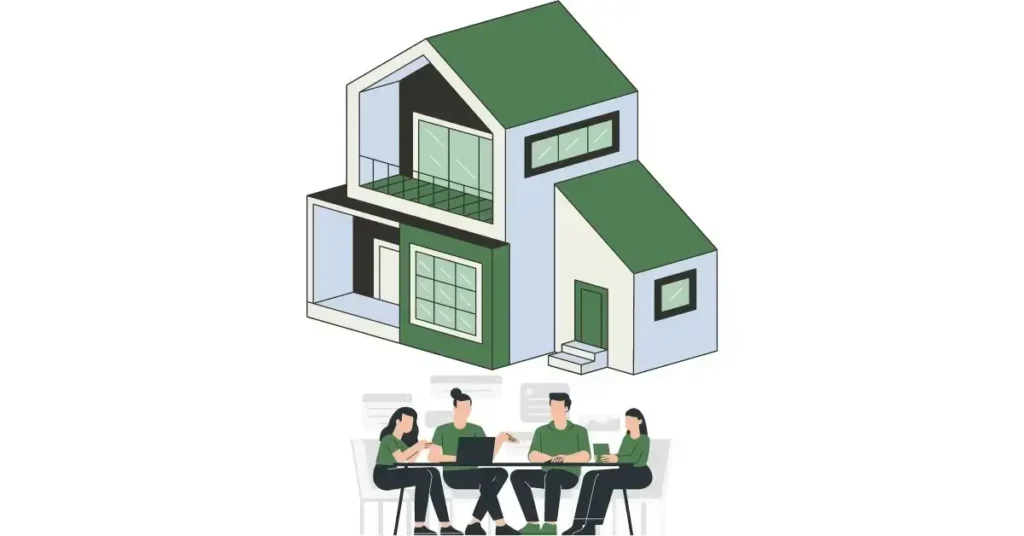The article gives an outline of various sorts of property insurance policies, going from HO-1 to HO-8, each offering varying degrees of inclusion customized to various property holders. It makes sense of the qualities and instances of every arrangement, featuring their suitability for different homes and their financial capacities. Also, the article talks about exclusions in home insurance contracts, for example, flood harm, tremor harm, war or psychological oppression, mileage, purposeful harm, business exercises, high-esteem things, pervasions, pets, and power disappointment. It accentuates the significance of understanding these rejections and picking the right policy type. The end encourages property holders to examine their choices with insurance agencies to decide the best coverages for their exact need.
Introduction
There are a lot of home insurance policies, many are sold independently and others are packaged. There are home insurance types that are hard to know ahead of time, such data will give experiences into what you are applying for. It is best practice to realize which home insurance type you might want to gain, this relates to the monetary expenses and installments to be held with. There are a few kinds of home insurance contracts that are offered, each has its own level and assortment of inclusion and security.
The most ordinarily known and introduced strategies are called HO-1 through HO-8 to shoppers, they vary in light of the degree of coverage that the mortgage holder need. These policy types are modified and provided explicitly to every type of home, from the fundamental to the more manufactured homes are incorporated.

Part 1. Kinds of Property Insurance
1.1 HO-1 “Fundamental Structure”
The HO-1 arrangement just somewhat covers property holders, it’s viewed as the essential variant. They offer multiple coverage from environment or lightning moreover, local theft and explosions. Unacceptable for most mortgage holders wouldn’t require total coverage in its place due to its limited inclusion and confined arrangement.
Example: With HO-1 inclusion, it has restricted coverage or explicit things to serve, they take into considerations such as local nuisances like theft to rioting moreover, local fire or accidental lightning strikes. As an example, HO-1 will cover harms brought about by fire or robbery yet not due to water spillage. On the off chance that a property holder is in a high-risk region, similar to a flood-inclined region or any harms that are excluded from the inclusion strategy won’t be engaged. Protection suppliers will be reluctant to offer more inclusion, they will rather offer what is reasonable for your need.
1.2 HO-2 “Wide Structure”
HO-2 approach gives more coverage to mortgage holders than HO-1 as the expansive structure. They give more complete coverage to property holders, including multiple home damages from snow or plumbing system and others as well. This kind of protection is best for those with financial struggles, in the event that you have a restricted spending plan.
Example: Their extra options for inclusions for HO-2 coverage is because of somewhat less coverage. HO-1 things are considered. They only cover items that are listed to damage the house, it does not comply for different things beyond the list to be covered.
1.3 HO-3 “Exceptional Structure”
HO3 is the most famous type of protection and it gives a full scope of coverage. They have various different inclusion things like home, individual property, and liability protection. Catastrophic events like floods or earthquakes are included in the insurance, however there is no cover for all injuries except if explicitly barred or covered another way.
Example: All damages, not just those that are prohibited, are covered by HO 3, and that implies all the coverage a property holder will require. They consider your home, structure, individual property, and liability protection. Liability protection will be included in case somebody is harmed with your property because of the things in the agreement.
1.4 HO-4 “Tenants Protection”
HO-4 is known as the leaseholder’s insurance, and it repays inhabitants for missed lease when they move into a property. Despite the fact that they give personal property insurance, it won’t cover the actual design of the property. The occupant coverage is for every individual who needs it, on the off chance that the tenant is harmed in the leased property, they have security.
Example: HO-4 has individual property and liability protection and a policy that covers the occupant. They think about your own property and obligation. They have inclusion for burglary or unintentional injury that might make your rental unit be harmed.
1.5 HO-5 “Extensive Structure”
The HO-5 protection, ordinarily known as the comprehensive form, offers a total degree of coverages for property holders. High-value individual property like precious stones up to artistic work furthermore, rarities and collectibles are completely covered exhaustively by them. This is particularly pertinent to property holders with expensive possessions and homes.
Example: With HO-5 it has broad coverage for costly things, it covers high-value individual properties like precious stones up to artistic work furthermore, rarities and collectibles. They think about your home, different designs inside the property, individual property, and liability. They will cover damages or robbery of a significant items like a craftsmanship assortment or rich gems.
1.6 HO-6 “Condo Protection”
HO6 is a strategy with coverage for Condo proprietors, otherwise called condo insurance. There is insurance for interior and liability, however it won’t cover the exterior of the structure. Explicitly condo proprietors need coverage, which will make it substantially more probable that there will be a mishap or burglary.
Example: The unit has insurance against burglary, and a policy that covers the townhouse proprietor. They consider all that while deciding your unit’s construction, items, and liability. The cover for accidental damage within your apartment suite unit is connected with burglary and risk because of unintentional injury beyond your unit.
1.7 HO-7 “Trailer Protection”
Certain individuals call the insurance coverage of pre-assembled or trailers, HO-7, the manufactured house protection. They offer assurance for both personal property and home design. Since they are for mortgage holders, portable, pre-created, or trailers homes are included for this.
Example: HO-7 gives inclusion for portable and trailers homes, individual property, and insurance against liability. They consider whether the design is sufficient for a portable dwelling, individual property, and obligation. If the portable/trailer home has been damaged, they might have the option to give coverage to the burglary or the injury to your property.
1.8 HO-8 “Old Home Protection”
HO-8 strategy is an old home protection that safeguards more established homes that have unique highlights. They have restricted coverage for memorable and historic homes, which will basically focus in on the substitution of material and work that is at this point not accessible.
Example: There is a coverage for Old or Noteworthy Homes with HO-8. The development materials are considered alongside work, fixes, and substitutions. Harm caused by age won’t influence how much insurance is given to your old home.

Part 2. Home Insurance Policy Exclusions
2.1 Flood Damage
Home insurance companies typically do not accept home damage due to flooding. They include the water damage that comes from hurricanes and heavy rain downpours. Homeowners who do not have flood insurance are considered a separate type of risk.
2.2 Earthquake Damage
People with earthquake caused homes are often denied claims by house insurance companies. There is damage from earthquakes, as well as from rockslides. Homeowners with separate insurance plans should do so because they are deemed to be a separate category of risk.
2.3 War or Terrorism
Home insurers rarely refuse home damage because of war or terrorism. They are caused by explosions, gunfire, and fire.
2.4 Wear and Tear
Home insurance will deny claims related to property damage caused by general wear and tear. They were built to be able to take a risk with unexpected, accidental or accidental harm.
2.5 Intentional Damage
Home insurance often excludes home damage from their coverage. They do not adequately cover acts that are not intentional.
2.6 Business Activities
Home insurance often does not pay for business-caused damage. They are not intended to affect the commercial activity in the home, but to protect it–and the personal use of it. Business insurance is a good choice for homeowners because it is thought to be a different kind of risk.
2.7 High-Value Items
There are limits on how much is excluded from a home with too many high-priced items. You need to purchase separate policies to ensure your items are not damaged, and they have designated limits.
2.8 Infestations
Home insurance often denies claims regarding damage due to the bugs. Pest management specialists look at the consequences of pests not paying their fair share, whereas homeowners who are having issues should inquire about their responsibilities.
2.9 Pets
Pet damage isn’t usually excluded from home insurance. Damages by animals and liability to other people are not covered by them.
2.10 Power Failure
Home insurance usually doesn’t cover homes that are damaged by power outages or failures. Ruined or rotten food from power shortages is not covered by the insurance company.
Conclusion
Before you learn about home insurance, speak with your agency about each policy type. All possible coverage helps to give the best practices with each type. The scope of the exclusions in each contract should be included in order for the information to be sufficient for each type. These things can help you choose the best home insurance company you can find.
Thank you for reading, if you have any queries you may use the contact us or leave a comment below.
[iframe src=”https://everestacademics.blogspot.com/p/8-best-property-insurance-forms-to-keep.html” width=”100%” height=”100″]
